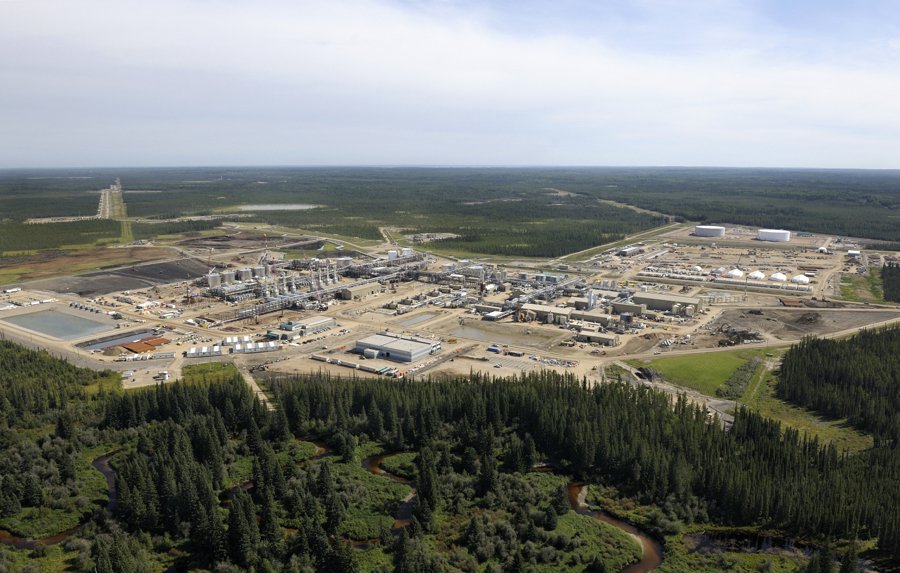Canada’s oil sands to remain unhurt by falling crude prices
For the first time in four years Canadian oil sands producers are not afraid of what the upcoming winter will do to crude prices as revamped US refineries are already absorbing their production and new oil-rail terminals are ready to deliver it to markets across North America.
Traditionally, Canadian producers’ limited export pipeline capacity coupled with the end of the U.S. summer driving season has led to oil surpluses in Alberta, sending prices down and restricting producers potential revenues.
Not this year, predict the companies that mine and drill the world’s third-largest crude reserve.
“There’s an impression that the oil sands is the marginal barrel,” Brian Ferguson, chief executive of Cenovus Energy Inc, one of the country’s largest oil sands developers recently told Reuters. “Yes, some of the projects are more marginal but the majority of the big producing projects, the majority of the resource, is very economic.”
Price watch
After U.S. oil tumbled to its lowest prices in nearly two years early this month, a sudden slump in prices this winter would be particularly unwelcome. At around $79 per barrel, the absolute price in Canada is getting nearer the break-even cost for major new developments.
Lorraine Mitchelmore, the president of Royal Dutch Shell Plc’s Canadian unit, which operates a mining and upgrading project in the Alberta oil sands, said last month that Brent below $70 per barrel would be “a challenge.” But she told Reuters that she sees no risks to production at current prices.
So far, Canadian crude is holding up well around $13.50 per barrel under West Texas Intermediate, the U.S. benchmark crude. The index fetched about $93 a barrel last week, the slimmest differential since July 2013.
Looming threats
But while oil sands producers seem optimistic, a few of the factors behind the winter slump in Canadian crude prices remain: North American refiners still close for maintenance in the fall, thwarting demand for crude. Road construction also tends to fade, which lessens the demand for asphalt, a by-product of refining heavier oil sands crude.
Congestion in exports pipelines tends to worsen during cold weather, as oil sands bitumen can get more viscous than usual, forcing producers to blend in a higher proportion per barrel of ultra light oil.
“Pipeline bottlenecks will continue to occur,” Douglas Proll, executive vice-president at Canadian Natural Resources Ltd. said earlier this month at a panel discussion about the oil sands at an energy conference in Toronto.
However, talk of new plans east, west and south, as well as rail will see heavy oil differentials remain modest “even as we enter the traditional low demand of heavy oil of the months of December, January and February,” Proll added.
The U.S. Department of Energy expects oil imports to decline to 21% of total consumption — its lowest level since 1968. And while Canada has managed to increase its market share in neighbouring country, Canadian light oil and heavy needs to find new markets.
{{ commodity.name }}
{{ post.title }}
{{ post.date }}


4 Comments
chet
and this is newsworthy?
canadian
if the oilsands are not marginal surely there should be room in that healthy margin for a water tax and carbon tax
Jon Doe
The title is wrong. All energy Companies are hurt by falling oil prices. The truth is that the price for heavy streams should be more resilient but a drop in the benchmark price will do serious damage to the il Sands producers. 10 years ago if you asked producers to name a fantasy price for oil they would have said a steady $70/bbl . Now they are saying that is break even.
When people start with this type of propaganda that is when you should start to worry. The Oil patch has always been boom bust.
Alvin(((((((((((((((
I am not sure if I have ever read an article so poorly written and so devoid of facts as this masterpiece by Cecilia. Canadian tar sands oil sells for $20-$30 less per barrel than WTI crude. Add $25 per barrel in rail transportation cost and the economics of tar sands begin to collapse with WTI prices at $75 per barrel. The first impact, which is already being felt, is the cancellation of new tar sands projects. Statoil and Shell have either pulled out or in the case of Statoil delayed projects for 3 years. Existing production is already uneconomic at $75 WTI.
I will be conservative with my estimate.
$75 WTI – $20 per barrel lower grade tar sand oil = $55 per barrel – $20 per barrel transportation cost = $35 Tar Sands Oil. You can’t make a profit at $35 per barrel. I shaved $ 5 dollars off of the rail transportation cost and used $20 for the lower grade oil to make it a conservative estimate. The energy input to heat tar sand to make it flow plus adding a 10 percent light crude diluent to keep it viscous are not included in my calculations. Nor is the cost of heavy equipment, labor and overhead included in my estimate. One can see from the picture associated with this article that remediation costs are not included either.
I am not sure how much industry paid to have this article written, but they sure got their money’s worth if a masterpiece fiction story is what they were seeking.